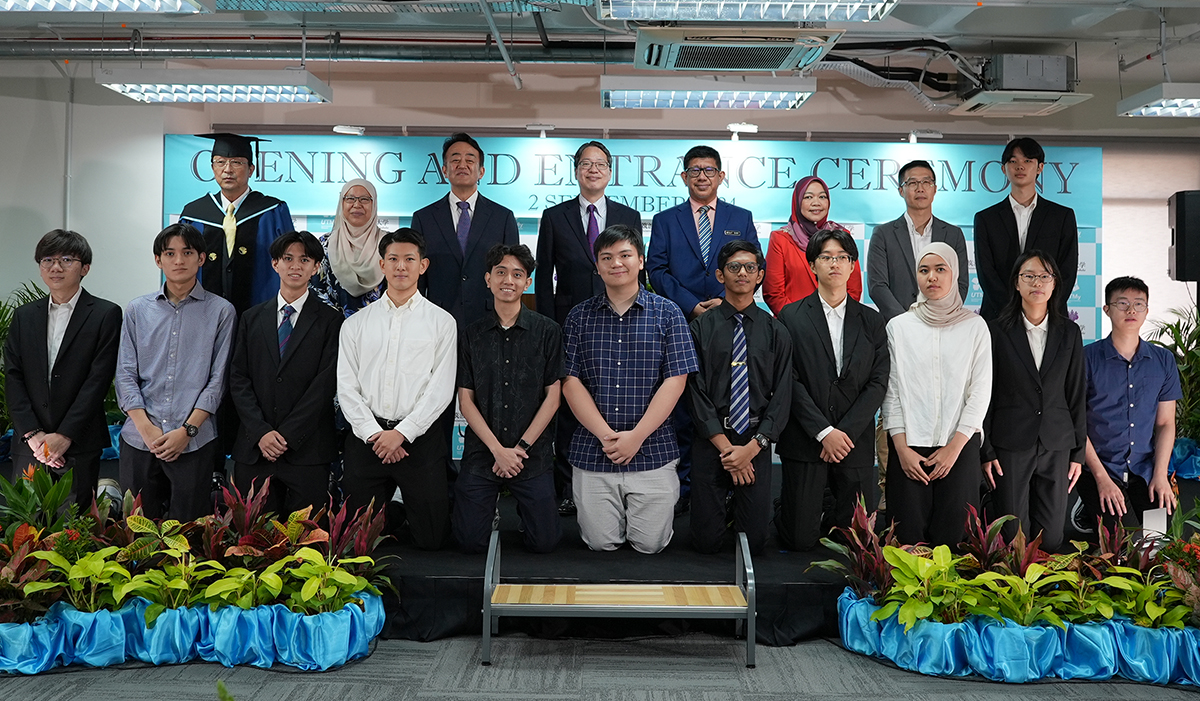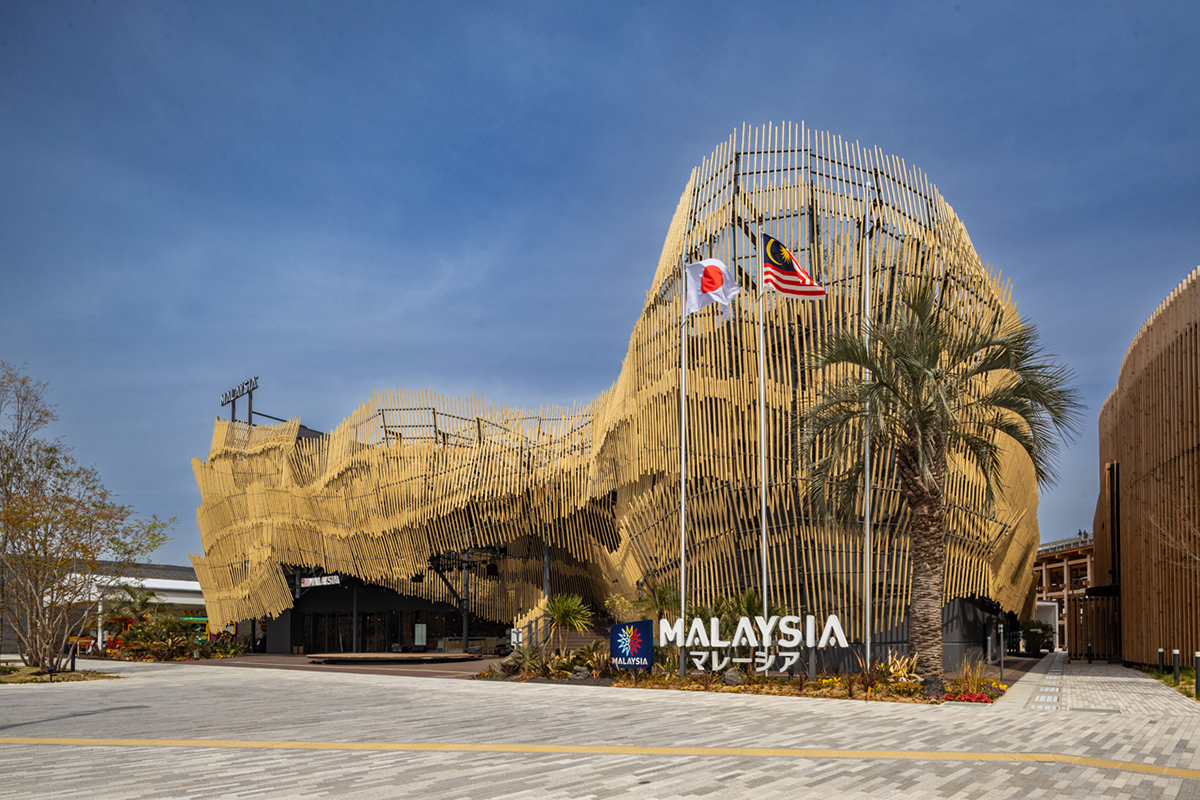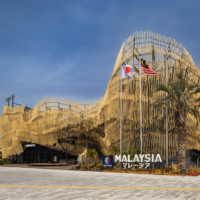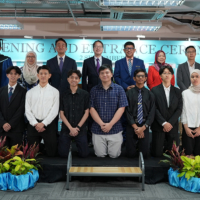Upon achieving independence from the British in 1957, Japan was one of the first countries with which Malaysia established diplomatic relations. Japan soon established itself as one of Malaysia’s top trading partners, and as of last year by one metric it ranked as the fourth-largest in Malaysia.
This strategic partnership has evolved over the decades based on mutual trust. Economic cooperation remains a key component, and collaboration between Malaysian and Japanese businesses continues to thrive.
In 2025, attention in this area is being drawn to such areas as green technology, digital transformation and the halal trade.
The Malaysia-Japan relationship also encompasses cultural and people-to-people interaction at all levels. This includes youth exchanges, Japanese experts traveling to Malaysia to deliver lectures and participate in education programs, and young Malaysians traveling to Japan for higher education.
When it comes to Malaysia’s relations today with Japan — and the rest of the world — the Malaysia Pavilion at Expo 2025 may be a good place to start.
Business, culture in spotlight
Designed by prominent Japanese architect Kengo Kuma, the woven bamboo facade of the Malaysia Pavilion is meant to symbolize unity and growth under a shared sky. The structure is said to represent “the essence, innovation and cultural warmth of an entire nation.” In more concrete terms, the pavilion, the materials used to build it and the exhibits within are all intended to bring to mind Malaysia’s rich biodiversity.
The purpose for Malaysia having the pavilion at the expo is to promote investment, innovation and cultural diplomacy. Specifically, the Malaysian government hopes to showcase the country’s technological and innovation capabilities while strengthening strategic collaboration with other nations, including Japan.
The pavilion is laid out to highlight everything from green initiatives and innovations to providing a space for business discussions related to trade, investment and collaboration. Within these connections, one of the projects being hosted at the pavilion is the Malaysia Business Program. Launched in April and slated to run through October, the program is aimed at fostering bilateral economic activity, generating memorandums of understanding for future projects and — with Japan specifically in mind — presenting Malaysia as a gateway to Southeast Asia.
In this regard, Malaysia’s Deputy Prime Minister Datuk Seri Fadillah Yusof said at a news conference in Osaka in May that his country’s presence in Osaka had secured more than 8 billion ringgit ($1.9 billion) in potential investments and 20 memorandums of understanding. By mid-May, for example, the two countries had already signed three strategic agreements valued at $3.18 billion. The agreements were all aimed at strengthening Malaysia-Japan collaboration with the goal of promoting a low-carbon and bio-based economy.
The business program also featured pitch sessions for Malaysian startups to present their work to potential investors, as well as seminars and talks aimed at raising awareness about efforts in Malaysia to create a sustainable economy and encourage a digital transformation.
Beyond this, the pavilion’s layout also included spaces for visitors to encounter traditional Malaysian handicrafts firsthand and even sample Malaysian cuisine.
Collaboration expands
Business collaboration between Malaysia and Japan extends what can be seen through the lens of the Osaka Expo. First, Japanese companies continue to make direct investments in Malaysia. One potential target is the ASEAN (Association of Southeast Asian Nations) Power Grid initiative. The goal of this initiative is to create an efficient, reliable and resilient electricity infrastructure in the belief that this will stimulate regional economic growth and development. To be sure, such investment is likely to boost technology exports, but as some observers point out, it will also promote decarbonization and the development of renewable energy.
Japanese companies are also investing in semiconductor assembly, smart manufacturing and digital services in Malaysia. For example, in April, Tokyo-based Ferrotec Holdings Corp. broke ground on a second plant in Kedah state, northwestern Malaysia, intended to beef up its manufacturing capacity for chip components. Just a year ago, Prime Minister Anwar Ibrahim specifically noted that “active Japanese FDI (foreign direct investment) has been a crucial factor in the success of Malaysia’s semiconductor industry.”
Smart manufacturing likewise has been an area of mutual interest. For example, since 2019, the Japan External Trade Organization and Malaysia’s SIRIM Berhad (formerly known as the Standard and Industrial Research Institute of Malaysia) have been working together to introduce small and midsize enterprises in Malaysia to Japanese smart manufacturing technologies.
Finally, bilateral collaboration has been taking place in the digital services market as well. In 2023, for example, Japanese trading giant Mitsui & Co. invested $58 million in Malaysia’s Axiata Digital & Analytics. ADA, which describes itself as the largest independent data and artificial intelligence company in the region, described it as a “strong endorsement” of their work as they deepen their collaboration with Mitsui to empower the latter’s partners in those areas.
While somewhat indirect, the Osaka Expo also presented another avenue for Malaysian-Japanese collaboration in halal diplomacy. Malaysia hosted a seminar about its halal food industry at the pavilion with the goal of expanding such trade. This was part of Malaysia’s efforts to strengthen relations around the region by boosting its halal ecosystem.
This ecosystem entails, among other things, setting standards for ingredients and products, as well as connecting with halal-certified suppliers in Japan and elsewhere. In fact, speaking to reporters from Malaysia’s Bernama news agency this past May, Japanese Ambassador to Malaysia Noriyuki Shikata said that Malaysia has been attracting foreign investment in the food industry from Japan and elsewhere precisely because of the nation’s halal certification regulations.
Malaysia as ASEAN chair
ASEAN’s chair rotates among its members every year. This year, the duty was passed on to Malaysia. Under the theme of “Inclusivity and Sustainability,” Malaysia has been advocating for inclusive and sustainable regional growth, digital innovation and economic resilience.
From Malaysia’s perspective, this complements its ties with Japan through the ASEAN-Japan comprehensive partnership. That partnership has evolved in the particulars since it was first established in 1973. Still, the core principles remain: cooperation in peace and security; engagement with one another at all levels for mutual economic prosperity; cooperation regarding science, technology, innovation and the environment; social, cultural and people-to-people exchanges; and regional and global cooperation.
Meeting earlier this month, ministers from Japan, Malaysia and other ASEAN countries renewed their calls for effective implementation of their shared vision for the partnership. This echoed Prime Minister Shigeru Ishiba’s call from this past January for building a more multilayered relationship between the two countries.Whatever the case, Malaysia continues to view Japan as a key partner in Malaysia’s regional agenda. Earlier this year, the leaders of both countries affirmed the importance toward this end of maintaining supply chains in the region. Another regional issue has been that of connectivity, and toward that end, Japan has been meeting with ASEAN regularly since 2011 to discuss matters of mutual concern as improved connectivity is seen as a means for narrowing development gaps.
A shared future
Since 1957, Japan and Malaysia have pursued people-to-people exchanges. This stance was given renewed emphasis in 1982 with the launch of Malaysia’s “Look East” policy. The purpose of that policy was to find ways to learn from such successful regional partners, gain knowledge of best practices at the ground level, and adopt those lessons to Malaysia’s own development plans.
Among the means for pursuing these exchanges is encouraging university students from each country to study in the other. Shikata, for example, noted recently that there has been a 25% increase in Japanese students enrolled in Malaysian universities. Tourism from Malaysia to Japan has likewise been surging.
In terms of governmental action, Malaysia last October sent delegates representing various government institutions to Japan to learn about Japanese productivity development initiatives and strategies.

One notable milestone in this regard was the opening of the University of Tsukuba’s overseas campus in Kuala Lumpur. This marked the first instance of a Japanese university opening a campus abroad that would award Japanese degrees. Tsukuba President Kyosuke Nagata, in his address for the occasion, noted his hope that the campus would develop human resources capable of solving global issues facing Malaysia and neighboring countries.
Through all this, the hope for Malaysia is that by continuing to “Look East,” this thriving cooperative relationship with Japan will continue.
Talent development, cultural exchanges and student exchanges similarly seem unlikely to abate. But perhaps most important of all, as Malaysia positions itself as a regional hub for investment and innovation, its collaboration with Japan will remain central as countries throughout the region work to build a resilient and sustainable future.
Download the PDFs of this special







